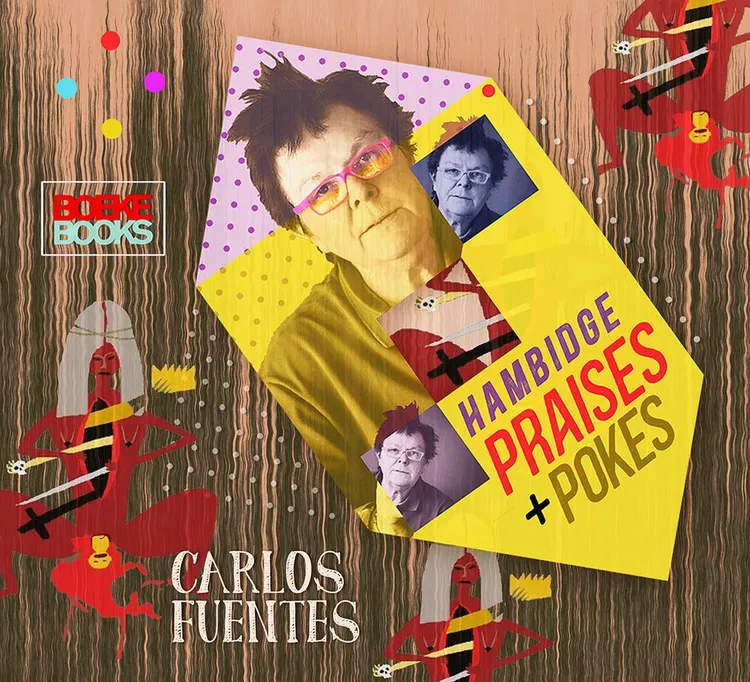Terra Nostra is, I believe, a long meditation on power. — Carlos Fuentes in an interview with Manuel Osorio.
I
Don Quixote or the Critique of Reading is an important critical text by Carlos Fuentes
Fuentes sees the novel as a game between truth and fiction. Literature gives a unique glimpse into life confounded by dogmas (of the church and politics). He believes that novels correct what history can never manage.
In 1975, Terra Nostra appeared. I was a first-year student at the University of Stellenbosch and eager to read. A novel set between the 16th and 20th centuries. The influence of James Joyce's Finnegans Wake has already been pointed out. It has three parts: “The Old World", “The New World" and “The Next World".
Rebirth or reincarnation is familiar to magical realism. King Felipe II, the girl Celestina and the student Ludovico are the main characters. Three mysterious characters (with 12 toes) emerge in different time periods. The novel begins in Paris (July 14, 1999) with a pilgrim travelling the new world.
In a section called “The Plague", the reader encounters doors painted with crosses. Which reminds us of our experience of the Covid pandemic.
In “The Forest" we find one of the worst rape scenes recorded in a novel. But Celestina survives thanks to music and fantasy. She also believes she was visited by the devil and confesses she fornicated with him.
Lees hierdie artikel in Afrikaans:
II
The way in which books crop up and recur remains a miraculous experience. This novel has stood on a bookshelf in my kitchen for 30 years and takes me back to Joyce and Cervantes' Don Quixote (the beginning of the novel) that appeared in 1605. Volume II appeared in 1615. In English in 1612.
And the architecture of the El Escorial is described in Terra Nostra.
Perhaps a metahistorical novel commenting on all of Latin American history? Should we read this as an allegory?
In this fanciful novel, Felipe El Señor marries the English Elizabeth and builds El Escorial.
Suspension of disbelief abounds.
As do intertexts. Hieronymus Bosch's triptych is here: Garden of Earthly Delights. And Luis Buñuel, the great filmmaker, the writer Jerzy Kosiński and all the famous South American writers are thanked and embedded here. And, of course, Dulcinea del Toboso.
It's a long novel (891 pages) and plays an ongoing game with history and the narrator's view of history as a pudridero (literally, the garbage heap).
Fuentes is an acknowledged theoreticist on South American novels, as in La nueva novela latinoamericana (The Latin American New Novel), Casa con dos puertas (House with Two Doors), Tiempo mexicano (Mexican Tempo) and Cervantes o la crítica de la lectura (Cervantes or the Critique of Reading).
If the novel is a failure, the American writer Robert Coover noted in The New York Times, it is a magisterial failure. After all, Coover's The Public Burning (1977) is itself a novel that blends reality and fantasy with the burning of the Rosenbergs in Times Square and a cynical look at the McCarthy era.
Terra Nostra is an encyclopaedia of history and mythology, noted one José Miguel Oviedo.
Mirrors that reflect. The novel as an enigma that does not reveal its secrets. Like El Escorial is a basilica, palace, library, pantheon, museum, university and hospital, this novel becomes something more than magical-realism. It is metahistorical commentary that harnesses the imagination.
A novel with halberdiers.
El Escorial (begun in 1563) was conceived as a monument to commemorate the Spanish victory over the French in 1557 at the Battle of St Quentin.
The novel, too, is a monument within South American and modern literature. Constructed in a kind of triptych formation. With each opening of this astonishing book, you come across something you didn't know.
In 1987, Fuentes was appointed at Harvard as the Robert Kennedy Professor of Latin American Studies. He was always critical of the US, which he called the “United States of Amnesia". Just like Borges; yet they liked to teach at the illustrious universities and meet important American writers.
In 1984 Fuentes won the Mexican Prize for National Literature and in 1987 the prestigious Cervantes Prize. In 1992 he was awarded the Légion d'Honneur.
A legend internationally and nationally.
♦ VWB ♦
BE PART OF THE CONVERSATION: Go to the bottom of this page to share your opinion. We look forward to hearing from you.



To comment on this article, register (it's fast and free) or log in.
First read Vrye Weekblad's Comment Policy before commenting.